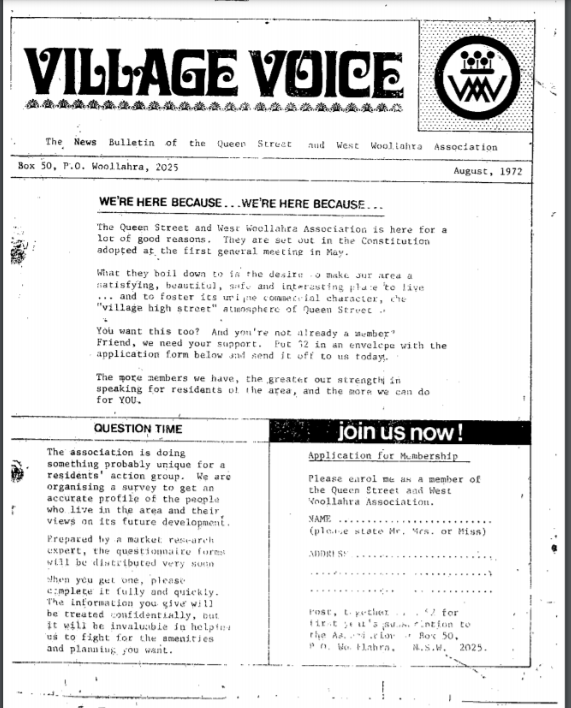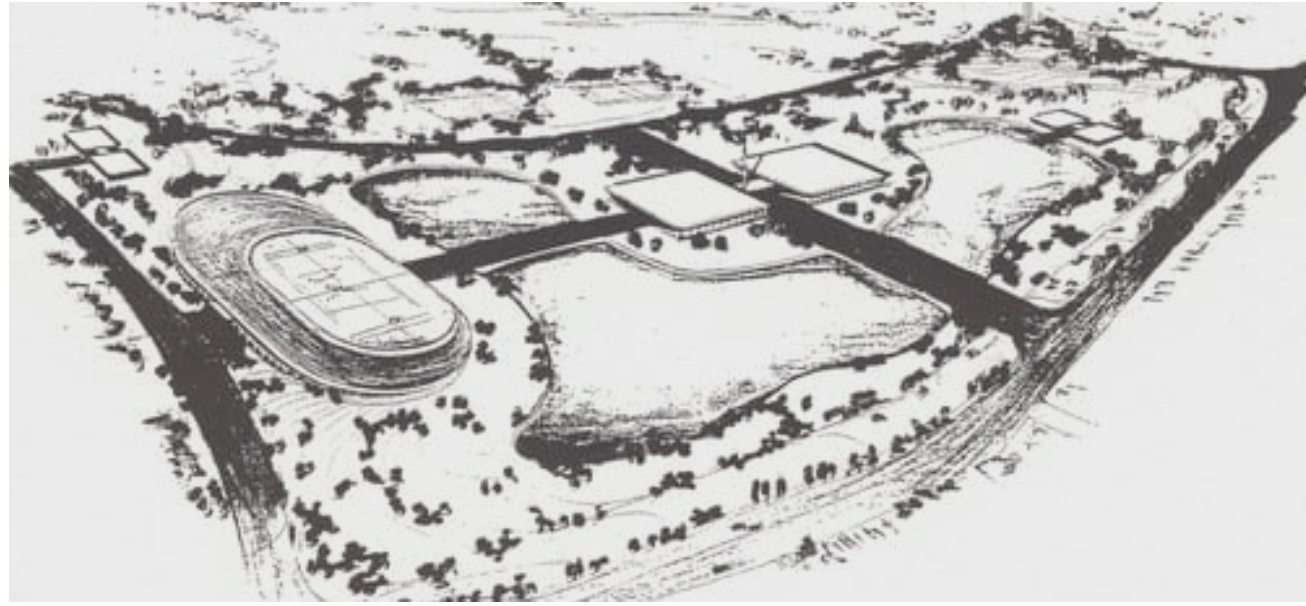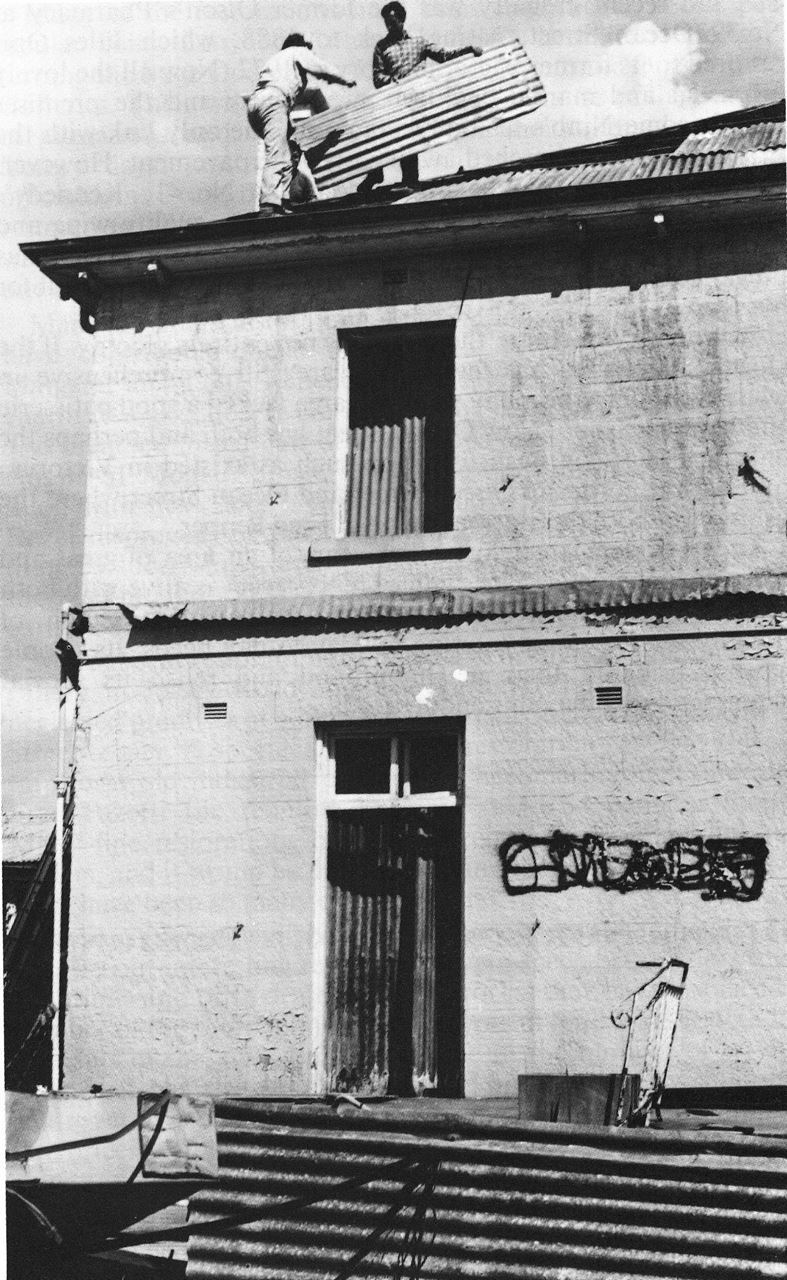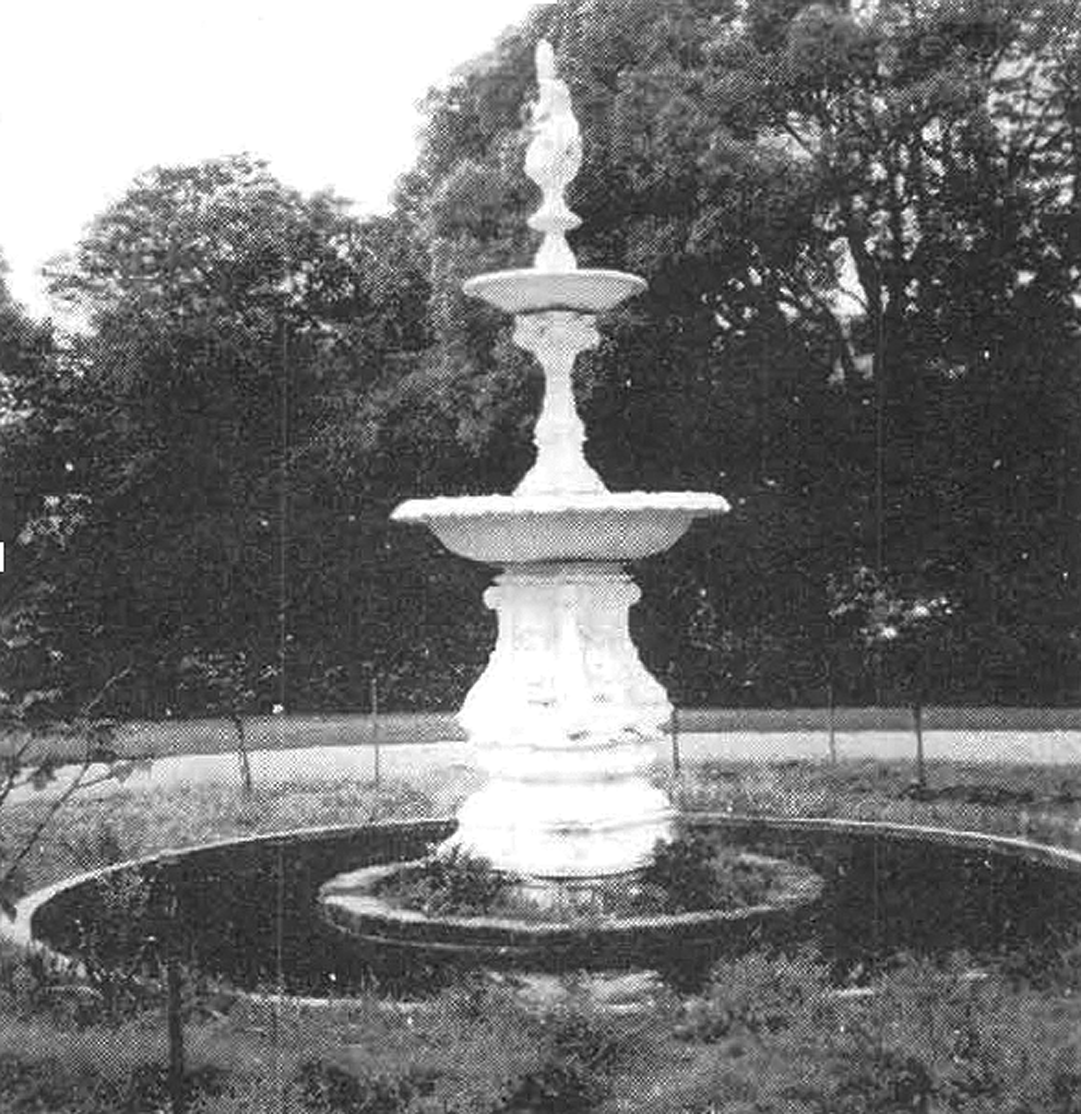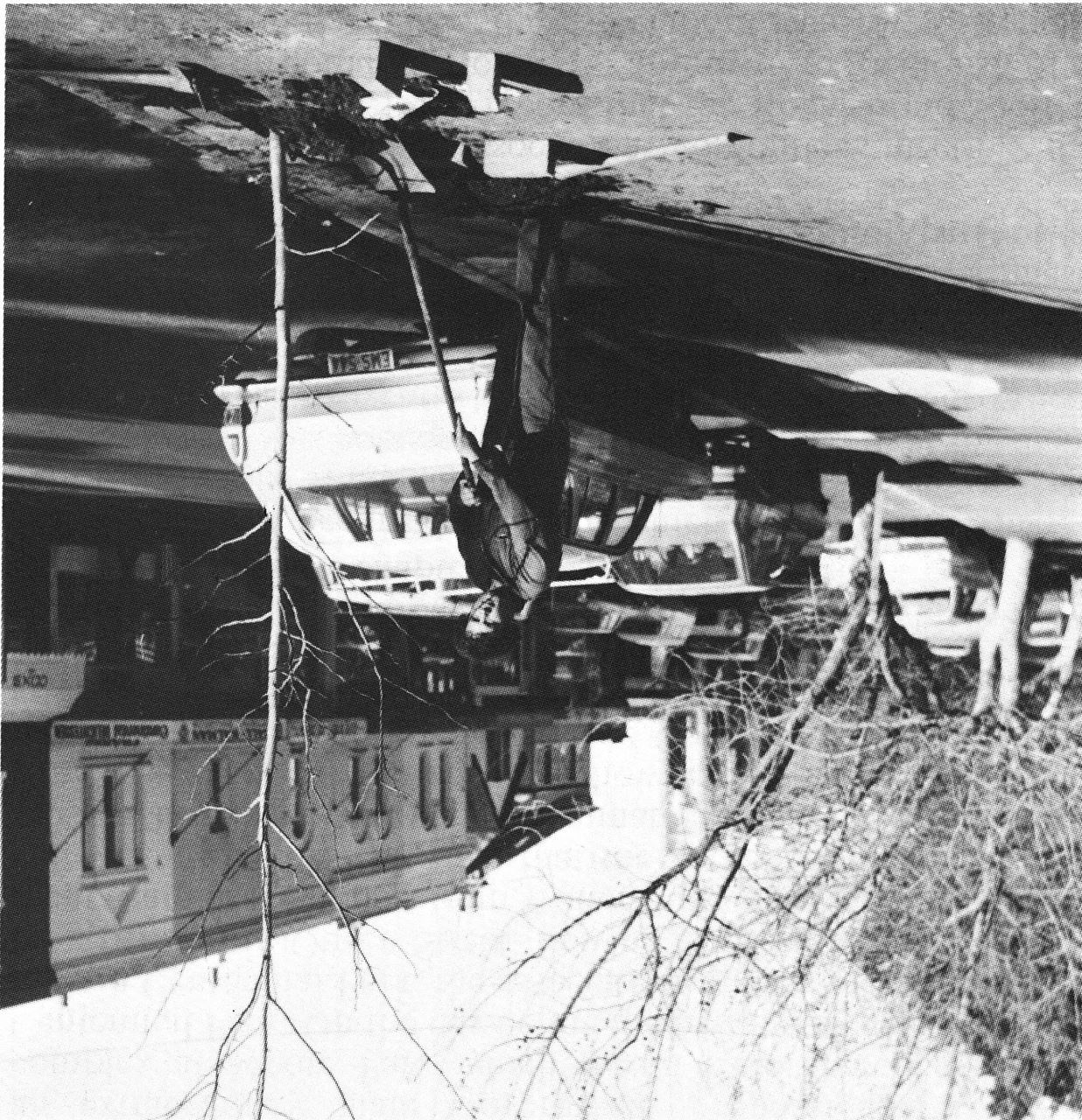The Association was also instrumental in getting a Victorian fountain and surrounding pond installed in Davies Reserve, on the corner of Queen and Oxford Streets. The fountain had originally stood in the front garden of the Rosemont Estate in Ocean Street and was donated by the Burrell family. Working together with Woollahra Council, the Association arranged for the restoration and installation of the fountain,which was opened in November 1987. After nearly 30 years of service, it was overhauled again in 2016 by the Council. which then it renamed the Queen Elizabeth II Fountain.
The Davies Reserve fountain in its original location in the Rosemont Estate

